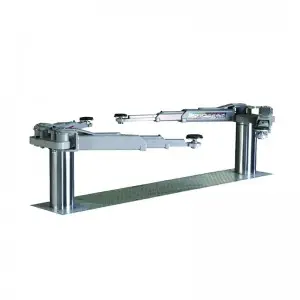Cylinders have been a staple in human history for thousands of years, serving a variety of functions and purposes. From the ancient Egyptians to modern engineers, the cylinder has been a key shape in architecture, mathematics, and engineering. In this article, we will explore the secrets of the cylinder and its significance throughout history.
The cylinder is a three-dimensional geometric shape that is defined by its curved surface and two congruent parallel circular bases. It is one of the most basic shapes in geometry, along with the sphere and the cube. The cylinder is characterized by its curved sides, which give it a smooth, rounded appearance. This shape is commonly found in everyday objects, such as cans, pipes, and containers.
One of the earliest known uses of the cylinder dates back to ancient Egypt, where it was used to create cylindrical columns in architectural structures. The shape of the cylinder provided structural support for buildings and temples, and its smooth surface made it ideal for carving inscriptions and designs. The ancient Egyptians also used cylinders to create cylindrical seals, which were used for stamping clay tablets and other documents.

Unlocking the Secrets of the Cylinder: A Deep Dive into its Shape, Uses, and History
In ancient Greece, the cylinder was studied and analyzed by mathematicians such as Archimedes and Euclid. These ancient scholars explored the properties of the cylinder, such as its volume and surface area. Archimedes is credited with discovering the formula for calculating the volume of a cylinder, which is πr^2h, where r is the radius of the base and h is the height of the cylinder. This formula is still used today in mathematics and engineering to determine the volume of cylindrical objects.

Unlocking the Secrets of the Cylinder: A Deep Dive into its Shape, Uses, and History

Unlocking the Secrets of the Cylinder: A Deep Dive into its Shape, Uses, and History
The cylinder also played a crucial role in the development of modern engineering and technology. In the 18th century, the invention of the steam engine revolutionized transportation and industry. The steam engine used cylinders to convert heat energy into mechanical work, which powered trains, ships, and factories. The cylinder was essential in the design of the steam engine, as it allowed for the expansion and contraction of steam to generate power.
Today, cylinders are used in a wide range of applications, from hydraulic systems to combustion engines. Hydraulic cylinders use pressurized fluid to create linear motion, which is used in heavy machinery and construction equipment. Combustion engines, such as those found in cars and airplanes, use cylinders to contain and compress fuel and air, which is ignited to produce power. Cylinders are also used in pneumatic systems, medical devices, and industrial machinery.
In conclusion, the cylinder is a versatile geometric shape that has played a significant role in human history. From ancient civilizations to modern technology, the cylinder has been used in a variety of applications, from architecture to engineering. Its simple yet elegant shape has made it a fundamental element in mathematics, science, and design. As we continue to innovate and explore new technologies, the cylinder will undoubtedly remain a key shape in our evolving world.k Lift Accessories
